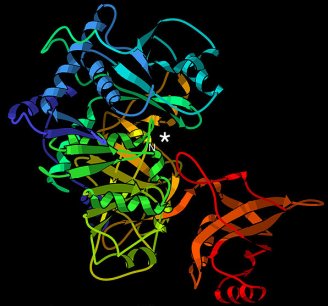
Before I comment further, I want to make it clear that Dr. Rana has probably forgotten more biochemistry than I have ever learned. I have a lot of respect for him and am a big fan of his latest book. He and I disagree on some issues, but the issues on which we agree are far more numerous and far more important. This particular issue, however, represents one of the former. While I think the difference in our positions is largely semantic, it is important and worth defining.
In the article, Dr. Rana reports on a study1 that was published in the Proceedings of the National Academy of Sciences of the United States of America. In the study, the authors compared the binding pockets of all known proteins in nature to a database of randomly-generated peptides (molecules that are very much like proteins but not large enough to be considered proteins). In order to understand the results of the study, you need to know what a binding pocket is.
A protein is a large molecule, but the workhorse of the protein is typically called its active site. When a protein needs to modify a molecule in some way, it attaches itself to the molecule at its active site. This active site is held in a region of the protein called the binding pocket. So the binding pocket is the area on the protein that contains the active site. An example of a binding pocket is given above. The drawing gives you a simplified view of a protein called phenylalanine racemase, a good example of a protein that is used in a wide variety of living organisms. The star points out the binding pocket.
In the study, the authors found that there were remarkably few varieties of binding pockets found in all the known proteins, and that all those pockets were able to bind (at least in some way) to something in the randomly-generated set of peptides. The conclusion, then, is that random chance could, indeed, produce biologically-active proteins. After all, if randomly-generated molecules could bind to the binding pockets of the known proteins of life, then those known proteins of life could also be randomly generated.
Continue reading “Can Random Processes Produce Biological Information?”





